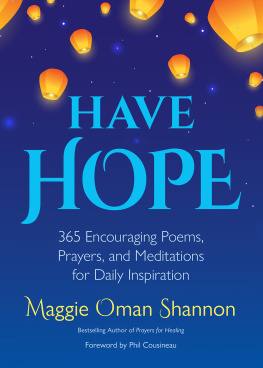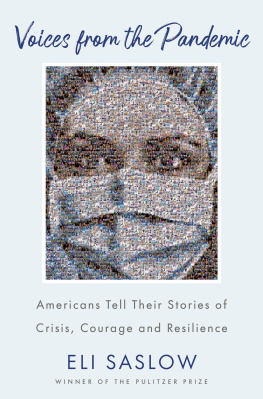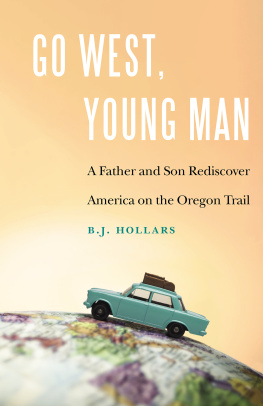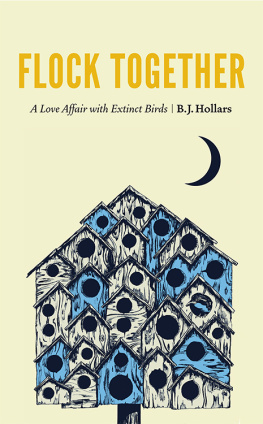Hope Is the Thing
 Hope Is the Thing
Hope Is the Thing
Wisconsinites on Perseverance in a Pandemic
Edited by
B. J. Hollars
WISCONSIN HISTORICAL SOCIETY PRESS
Published by the Wisconsin Historical Society Press Publishers since 1855
The Wisconsin Historical Society helps people connect to the past by collecting, preserving, and sharing stories. Founded in 1846, the Society is one of the nations finest historical institutions.
Join the Wisconsin Historical Society: wisconsinhistory.org/membership
2021 by the State Historical Society of Wisconsin
E-book edition 2021
For permission to reuse material from Hope Is the Thing (ISBN 978-0-87020-977-2; e-book ISBN 978-0-87020-978-9), please access www.copyright.com or contact the Copyright Clearance Center, Inc. (CCC), 222 Rosewood Drive, Danvers, MA 01923, 978-750-8400. CCC is a not-for-profit organization that provides licenses and registration for a variety of users.
Some pieces in this book were previously published on the Chippewa Valley Writers Guilds Hope Project website. Additionally, several pieces appeared in other media in slightly different forms: Araceli Esparzas on Wisconsin Life, John Hildebrands in Local Lit, Patti Sees in the Eau Claire Leader-Telegram, and Jake Wrasses in Volume One.
The cover art, We Get Through This Together by Emily Maryniak, was created for the Wisconsin Historical Societys COVID-19 Poster Project. Prints of the poster are available to purchase through the Societys online store, shop.wisconsinhistory.org/covid-19-poster-project.
Cover design by Emily Maryniak
Interior design and typesetting by Percolator Graphic Design
25 24 23 22 21 1 2 3 4 5
Library of Congress Cataloging-in-Publication Data
Names: Hollars, B. J., editor.
Title: Hope is the thing : Wisconsinites on perseverance in a pandemic / edited by B. J. Hollars.
Description: [Madison] : Wisconsin Historical Society Press, [2021]
Identifiers: LCCN 2021001163 (print) | LCCN 2021001164 (e-book) | ISBN 9780870209772 (paperback) | ISBN 9780870209789 (epub)
Subjects: LCSH: COVID-19 Pandemic, 2020Social aspectsWisconsin. | Hope. | WisconsinSocial conditions21st century.
Classification: LCC HN79.W6 H56 2021 (print) | LCC HN79.W6 (e-book) | DDC 362.1962/414009775dc23
LC record available at https://lccn.loc.gov/2021001163
LC e-book record available at https://lccn.loc.gov/2021001164
For the bringers of hope,
and for those who shine it brightly.
Hope is the thing with feathers (314)
EMILY DICKINSON
Hope is the thing with feathers
That perches in the soul
And sings the tune without the words
And never stops at all
And sweetest in the Gale is heard
And sore must be the storm
That could abash the little Bird
That kept so many warm
Ive heard it in the chillest land
And on the strangest Sea
Yet never in Extremity,
It asked a crumb of me.
Contents
History isnt just in the past; its happening every day. Thats why in the course of its mission to collect, preserve, and share stories of our states history, the Wisconsin Historical Society has often made efforts to document historic events as they occur. From journals kept by Civil War soldiers to photographs of the civil rights movement, these real-time collection efforts have resulted in valuable resources that provide vivid windows into significant events.
In early 2020, as a deadly virus made its way around the globe, it was evident that we were living through an extraordinary moment. The Wisconsin Historical Society put out a call for community members to participate in the COVID-19 Journal Project, which asked them to write about their experiences during the pandemic in journals to be donated to the Societys collections. Additionally, a number of Wisconsin artists contributed to the COVID-19 Poster Project, creating public information posters that could be used during the pandemic as well as by future generations. Such projects give Wisconsinites from all walks of life the opportunity to have their stories documented as part of our states history.
When B. J. Hollars proposed this collection of writings in response to the pandemic, the Wisconsin Historical Society Press saw an opportunity to contribute to our agencys efforts to record history as it is happening. Hollarss project differed from the Societys other efforts in that he asked writers to reflect on a specific but universal topic: the myriad ways humans find hope in the face of strife. Hollars made a point of collecting pieces from different regions of the state, age groups, professions, and ethnic and religious backgrounds, efforts that aligned well with the Societys goals to share stories of all Wisconsin people, reflecting the diversity of our state.
While the writing of this collections pieces was underway, the country faced another historic event, as the death of George Floyd in police custody led to nationwide protests and renewed discussions about police brutality against communities of color. Due to the timing, many of these pieces address the dual challenges of the pandemic and systemic racism, sometimes opining on topics that are sensitive, contentious, or political. These too are a reflection of our times.
In the interest of preserving the experiences and voices of this diverse group of writers, their pieces have been only minimally edited for style and clarity. We hope that in addition to being of interest and providing inspiration to contemporary audiences, these writings will serve as a vital part of a historical record: a snapshot in time of what people around Wisconsin were experiencing, thinking, and feeling during a difficult year.
One Foot in Front of the Other
B. J. HOLLARS
Shortly before sunrise, I strap my seven-month-old daughter into her stroller and take to the sidewalks around our western Wisconsin home. For three months now, this has become our ritual, our anchoring to the earth. We strike out for several miles, observing no humans, but instead, the natural world grown bold. And not just backyard critters. Sure, we see the squirrels and the rabbits, but some days we see deer, too, traipsing down the streets, bowing their heads between the neighbors gardens. They sample all that has sprouted, chewing noisily before continuing their moveable feast.
If the deer see us, their recognition hardly registers. Perhaps they sense that we are no threat. Hope, for them, is a patch of fresh flowers and no one to shoo them away.
Hope, for me, is sharing with my daughterwhos been quarantined half her lifeany glimpse of the world we can get.
Leaning low beside the stroller, I whisper the name of those creatures just ahead of us.
Deer, I say. Deer.
Her eyes widen, her world expands.
Sometimes hope is a humble thing.
The Hope Project, too, was born humbly. It began one dismal day in March 2020 when, feeling hopeless myself, I called upon fellow writers to share with me where they were finding hope in the time of COVID-19. The call resulted in one hundred or so submissions, the majority of which were originally published on the Chippewa Valley Writers Guilds website. The guidelines were simple: each piece was limited to five hundred words and with a title that broadly borrowed from Emily Dickinsons Hope is the thing with feathers.
At the projects conception, it had no guiding principle other than my own need for hope. A month later, when stumbling upon the words of Maxine Hong Kingston, that guiding principle became clear. Kingstons words served as the directive Id been looking for: In a time of destruction, she remarked, create something.












 Hope Is the Thing
Hope Is the Thing